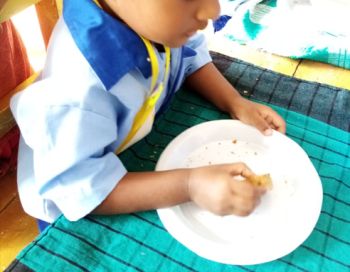An Acceptability of locally produced Ready-to-Use Therapeutic Food (RUTF) among children aged 2-4 years in Sri Lanka
Abstract
Although child wasting is preventable, it is a significant public health problem in Sri Lanka. Imported ready-to-use therapeutic food (RUTF), called BP-100, is part of the locally used treatment of severe acute wasting. However, Sri Lanka has faced economic barriers in providing this product. Two RUTF bars were developed in our laboratory based on global nutrient and other specifications (RUTF-1 and RUTF-2). Nutrient and microbiological analyses were within acceptable limits and shelf life was determined. This observational study was conducted to test the acceptability of locally produced RUTFs among children aged 2-4 years old, a first step in its possible use in place of imported versions. 56 children aged 2-4 years old in two preschools located in poor urban settings were included. These two RUTF bars and BP-100 were given to the children for a total period of three weeks (3 days of each product), with 3 to 4 days of interval in between. At the beginning, weight and height of the children were measured. A five-response hedonic scale was used to test acceptability. Mean daily intakes, and any apparent adverse effects were recorded. A taste test on the acceptability of RUTF and BP-100 among mothers or guardians was carried out on the last day of the trial. The colour, taste, smell, and texture of both RUTF bars were compared to BP-100. Overall acceptability of RUTF-1 (p=0.000) and RUTF-2 (p=0.02) was observed compared to BP-100 among both children and mothers. No adverse effects were reported. Further analysis indicated that there was no significant difference between locally produced RUTFs and BP-100 on acceptability in relation to sex, age, wasting, or stunting; however, a difference was noted related to ethnicity (p=0.000). In conclusion, locally produced RUTFs are as acceptable as BP-100. There is a need to assess the effectiveness of RUTFs while building partnerships with the food industry for sustainable production.

Authors retain all copyrights. In making a submission to World Nutrition, they are certifying that all material is theirs except quotations, as indicated, and that they have obtained permission for any photos, tables, or graphics taken from other publications or websites.




